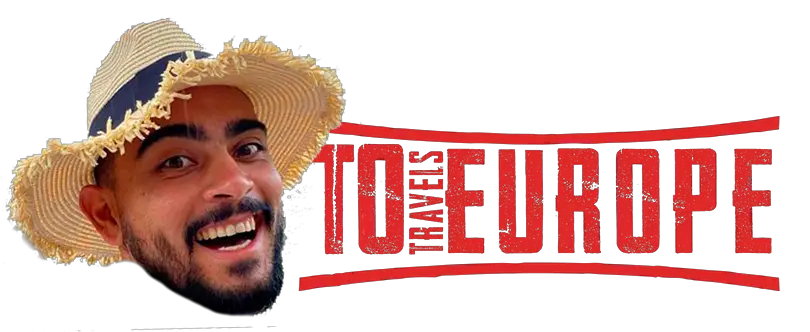Welcome! Today, we’re diving into the world of VAT, one of the most perplexing topics for business owners. It’s important to understand this complex tax and how it applies to your company. In this session, we’ll cover ten essential things you need to know about VAT. So, let’s get started!
What is VAT?
VAT, or Value-Added Tax, is essentially a sales tax imposed on the consumption of goods and services. At each stage of production and distribution, from the farmer to the consumer, VAT is added to the value of goods. As a business owner, it’s crucial to be aware of your obligations under the VAT consolidation act of 2010 and report and remit VAT to the revenue via ROS (Revenue Online Service).
Registration: When and How
Knowing when to register for VAT is essential. You must register once your sales surpass specific thresholds. If you’re selling services, the threshold is €37,500, while for goods, it’s €75,000. It’s important to note that these thresholds are based on a 12-month rolling period, not the calendar or fiscal year. Voluntary registration is also an option, which can benefit startups in terms of VAT refunds and future scalability. To register, you can use Form TR2 available on the revenue website. I highly recommend using the online option for a quicker and more convenient process.
Understanding VAT Charges
Determining when VAT applies can be tricky. The charge to VAT depends on whether goods or services fall under VAT regulations. Additionally, VAT rates vary for different products and services, with not everything being subject to the standard rate. It’s crucial to familiarize yourself with the various rate categories and ensure accurate application.
Intra-EU Supplies and VIES Reporting
If you engage in trade with other EU member states, you’ll need to be familiar with intra-EU supplies and the VIES (VAT Information Exchange System) reporting system. These processes ensure accurate reporting and compliance with EU regulations. It’s crucial to understand your obligations and how to effectively manage these transactions.
Filing Obligations and Completing VAT Returns
Even as a startup with a limited budget, you may need to handle VAT reporting. Learning to complete your VAT returns can be a valuable skill. By doing it yourself, you can save on accounting costs. Understanding the process and requirements will help you navigate this aspect of your business efficiently.
Penalties for Non-Compliance
Finally, it’s important to realize the implications of non-compliance with VAT regulations. Penalties can be severe, impacting your business financially and damaging your reputation. Being aware of your responsibilities and seeking professional guidance can help you avoid non-compliance and its associated consequences.
Remember, VAT is a complex tax, and this guide provides a general overview. For personalized advice tailored to your specific circumstances, it’s crucial to consult with a tax professional. Now that you have a clearer understanding of VAT in Ireland, you can confidently navigate this aspect of your business and ensure compliance.
When Does a Transaction Fall Under the Remit of VAT?
To determine whether a transaction is subject to VAT, we need to consider a few key factors. According to VAT regulations, the transaction must meet the following criteria:
- There must be a supply of goods or services.
- The supply must be made for consideration (payment).
- The recipient of the supply must be a taxable person (business).
- The place of supply should be within the country.
To simplify this, let’s consider an example. Imagine you walk into a café and purchase a cup of coffee. In this scenario, you transfer your money to the café owner in exchange for the coffee. This transaction falls under the remit of VAT because there is a transfer of ownership of a product (coffee) for money, and the café is a business conducting business in that country.
On the other hand, let’s say you invite friends over for coffee at your house, and they enjoy the coffee you provide. In this case, it is not considered a VATable transaction since there was no exchange of money, and you were not conducting business at the time of the coffee gathering. The law clearly defines what constitutes a VATable transaction, ensuring clarity for business owners.
Understanding VAT Rates
VAT rates play a crucial role in determining the amount of tax applicable to your products or services. Here are the main VAT rates you need to know:
- Standard Rate: The default VAT rate is usually the highest, and it applies to most goods and services. In Ireland, the standard rate is typically 23%. However, due to COVID-19, the rate was temporarily reduced to 21% until 28th February 2021, after which it reverted back to 23%.
- Reduced Rate: Certain goods and services, such as those in the tourism and hospitality industry, hairdressers, photography, restaurants, and hotels, fall under the reduced rate category. In Ireland, the reduced rate is usually 13.5%.
- Second Reduced Rate: There is a separate reduced rate of 9% that applies to newspapers, eBooks, and sports facilities.
- Livestock Rate: This rate, at 4.5%, is specific to livestock-related transactions and may not be relevant to all businesses.
- Zero Rated: Certain essential products and services are zero-rated, meaning they are exempt from VAT. Examples include books, children’s clothing and shoes, medicines, tea, coffee, bread, and milk.
- Exempt: Exempt status means no VAT applies to the products or services provided. This category includes financial services, educational services, and medical providers such as doctors and dentists.
It’s important to note that VAT rates can change due to various factors, such as government policies and economic conditions. For instance, during the COVID-19 pandemic, the Irish government temporarily reduced the VAT rate for tourism and hospitality businesses to 9% to stimulate economic activity in those sectors.
Understanding Self-Accounting under the Reverse Charge Mechanism in the EU
In the European Union (EU), there is a concept called self-accounting under the reverse charge mechanism. This mechanism applies when you purchase goods or services from other businesses located in the EU. Essentially, it means that you have to account for the VAT (Value Added Tax) yourself and declare it as both a sale and an expense. The net result of this self-accounting process is zero.
To better illustrate this concept, let’s consider an example. Imagine you buy a laptop from a company in Germany for €1,000. The invoice from the German company would state the amount as €1,000 with reverse charge VAT at zero percent. You would then need to pay the German company the full amount of €1,000. However, if you are registered for VAT in Ireland, you must self-account for the VAT as if it was charged in Ireland.
In this case, you would need to multiply the laptop price by the VAT rate in Ireland, which let’s say is 23%. So, you would calculate €1,000 multiplied by 23% (€230) and include that amount as both a sale and an expense in your VAT return. Assuming this is the only transaction you had during the VAT period, your VAT return would show €210 in Box T1 and €210 in Box T2. The net result would be zero, indicating that no additional VAT is owed.
While it may seem pointless to have a net result of zero, it is important to note that this process helps the tax authorities (revenue) track your transactions with other EU businesses. At the end of each two-month VAT period, you would need to repeat this self-accounting process for all goods and services purchased from other EU companies under the reverse charge mechanism.
Similarly, if you sell products or provide services to other EU jurisdictions, you need to indicate on the invoice that it is a zero percent reverse charge transaction. However, you also need to start filing VAT reports every quarter to inform revenue about what you sold and to whom. As your business grows, VAT reporting can become more complex, but there are automation tools available to simplify the process.
Let’s now take a closer look at the VAT return, specifically the VIES (VAT Information Exchange System) return. When selling to another EU company, you should obtain their VAT number and mention it on the invoice. Then, when filing your VAT return at the end of the quarter, you need to include the customer’s VAT number and the value of the supply made to them.
For instance, if you sold a laptop to a company in Germany for €1,000, you would need to enter the value of that supply (€1,000) in Box E1 of the VAT return and provide the German company’s VAT number. This process needs to be repeated for each customer you sell to within the EU.
Most companies file bi-monthly VAT returns, meaning they report their VAT liabilities and claim any VAT refunds every two months. The deadline for submitting the VAT return is typically 23 days after the last day of the reporting period. You also need to pay any VAT owed to revenue within this timeframe. Remember, you can only claim VAT on expenses if you have proper evidence, such as invoices showing the VAT paid on specific products or services.
The VAT return form, known as VIES V83, consists of eight boxes: T1, T2, T3, T4, E1, E2, ES1, and ES2. T1 represents the total VAT collected on sales, T2 includes the VAT paid on expenses and purchases, and T3 and T4 are automatically calculated based on T1 and T2. If T1 is greater than









